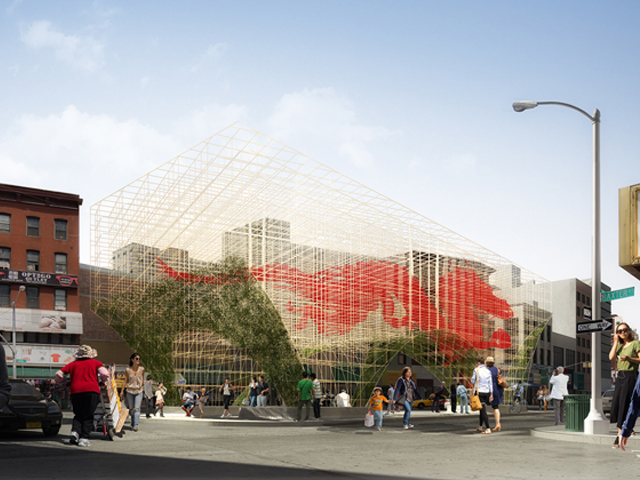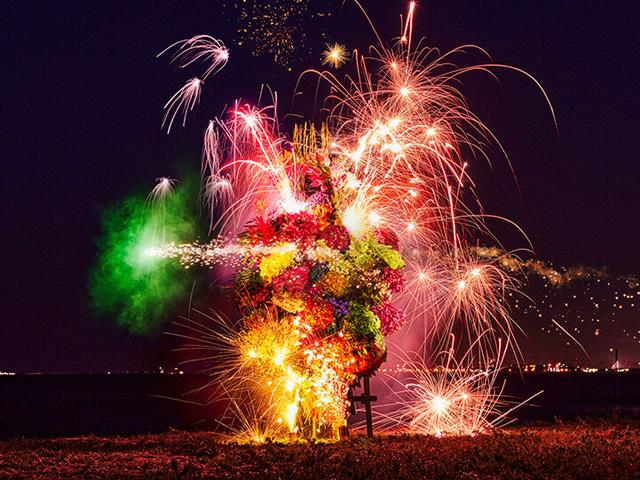DRAGON GATE IGNITES NEW YORK'S CHINATOWN
18 Apr 2018
A proposal for a bamboo-inspired 'Dragon Gate' in New York’s Chinatown will act as a catalyst for the revitalisation of the currently underutilised pedestrian area, activating greater public engagement within the space.

Throughout Chinese history, major cities were surrounded by imposing walls with impressive gates that acted as a symbol of strength and resilience. Each gate was given a name that reinforced them as impressive strongholds and were intended to strike fear into the hearts of enemies. The most popular name for these gates was the “Dragon Gate”, as the dragon is an iconic mythological symbol of power, strength and good fortune.
Inspired by this historical significance, the Dragon Gate pavilion in New York’s Chinatown has been designed to act as a symbolic landmark for the neighbourhood that is home to the largest Chinese population outside of China. The structure will utilise iconic symbols of Chinese culture in order to capture and unite the essence of Chinatown’s dichotomy; that of a community embedded in rich traditional that is resistant to change, but also one that advocates for significant contemporary advancements. The combination of modern materials with ancient symbols will unite these two aspects and promote an engaging public space that will hook in the surrounding community and capture “the spirit of a place that feels at once timeless and original”. 
Situated at the intersection of the Canal Street pedestrian triangle, the pavilion will mimic the triangular shape in order to seamlessly integrate into the space. At an impressive height of 10 metres, the structure will be an interwoven masterpiece of bronze steel that alludes to iconic Chinese bamboo scaffolding. A selection of pieces at its heart will be painted red to create the appearance of a flying dragon. Greenery will climb up the structure, adding fresh colour and texture to the classically dull Manhattan landscape. The pavilion will be eye-catching from every angle, encouraging locals and tourists alike to visit the area and populate the public space. 
The pavilion has been designed to respond to the urban landscape by ensuring pedestrian pathways will not be obstructed but will instead facilitate purposeful movement that allows for a constant flow of people. Three arches will be constructed under the pavilion, creating several pathways for pedestrians, and will feed towards a central public space that features interactive digital screens that display community and tourist information, truly solidifying the structure as a key landmark for Chinatown.
The Dragon Gate is an innovative concept that is more than a simple piece of public art – it is a catalyst for emanating rich Chinese culture and meaning, in order to create an exciting public space that is routed in culture. The design alludes to the symbolic significance of bamboo, that of longevity, vitality and luck, and the curves of the arches evoke traditional Chinese rooftops and strong city walls, demonstrating fortitude, safety and resilience. 
The Dragon Gate aims to provide an iconic symbol in an equally iconic area and draw engagement to a disused location in order to reinvent public space and pedestrian culture in Chinatown. It acts as a message of support for immigrants across the world, as diversification consistently increases and the need for innovative and exciting public space in dense city landscapes becomes increasingly necessary.







